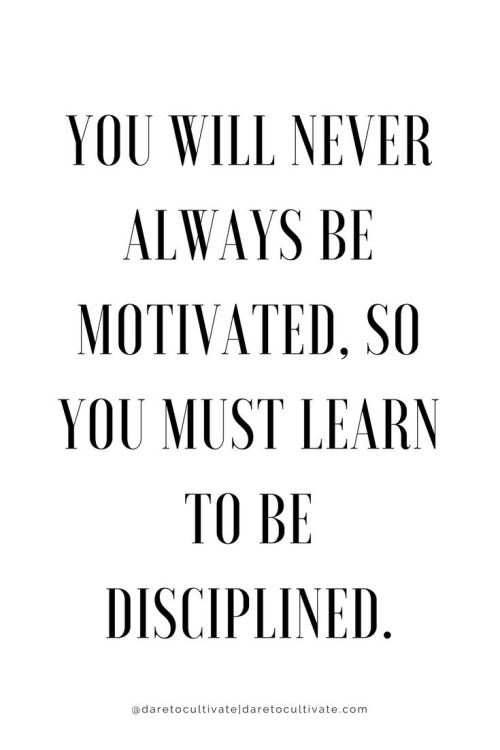6 Ways NASA Technology Makes You Healthier
6 Ways NASA Technology Makes You Healthier
An important part of our mission is keeping astronauts strong and healthy during stays in space, but did you know that our technology also helps keep you healthy? And the origins of these space innovations aren’t always what you’d expect.
As we release the latest edition of NASA Spinoff, our yearly publication that celebrates all the ways NASA technology benefits us here on Earth, let’s look at some ways NASA is improving wellness for astronauts—and everyone else.
1. Weightless weight-lifting

Without gravity to work against, astronauts lose bone and muscle mass in space. To fight it, they work out regularly. But to get them a good burn, we had to get creative. After all, pumping iron doesn’t do much good when the weights float.
The solution? Elastic resistance. Inventor Paul Francis was already working on a portable home gym that relied on spiral-shaped springs made of an elastic material. He thought the same idea would work on the space station and after additional development and extensive testing, we agreed.
Our Interim Resistive Exercise Device launched in 2000 to help keep astronauts fit. And Francis’ original plan took off too. The technology perfected for NASA is at the heart of the Bowflex Revolution as well as a new line of handheld devices called OYO DoubleFlex, both of which enable an intensive—and extensive—workout, right at home.
2. Polymer coating keeps hearts beating

A key ingredient in a lifesaving treatment for many patients with congestive heart failure is made from a material a NASA researcher stumbled upon while working on a supersonic jet in the 1990s.
Today, a special kind of pacemaker that helps synchronize the left and right sides of the heart utilizes the unique substance known as LaRC-SI. The strong material can be cast extremely thin, which makes it easier to insert in the tightly twisted veins of the heart, and because it insulates so well, the pacemaker’s electric pulses go exactly where they should.
Since it was approved by the FDA in 2009, the device has been implanted hundreds of thousands of times.
3. Sutures strong enough for interplanetary transport

Many people mistakenly think we created Teflon. Not true: DuPont invented the unique polymer in 1938. But an innovative new way to use the material was developed to help us transport samples back from Mars and now aids in stitching up surgery patients.
Our scientists would love to get pristine Martian samples into our labs for more advanced testing. One complicating factor? The red dust makes it hard to get a clean seal on the sample container. That means the sample could get contaminated on its way back to Earth.
The team building the cannister had an idea, but they needed a material with very specific properties to make it work. They decided to use Polytetrafluoroethylene (that’s the scientific name for Teflon), which works really well in space.
The material we commonly recognize as Teflon starts as a powder, and to transform it into a nonstick coating, the powder gets processed a certain way. But process it differently, and you can get all kinds of different results.
For our Mars sample return cannister prototype, the powder was compressed at high pressures into a block, which was then forced through an extruder. (Imagine pressing playdough through a mold). It had never been done before, but the end result was durable, flexible and extremely thin: exactly what we needed.
And since the material can be implanted safely in the human body—it was also perfect as super strong sutures for after surgery.
4. Plant pots that clean the air

It may surprise you, but the most polluted air you breathe is likely the air inside your home and office. That’s especially true these days with energy-efficient insulation: the hot air gets sealed in, but so do any toxins coming off the paint, furniture, cooking gas, etc.
This was a problem NASA began worrying about decades ago, when we started planning for long duration space missions. After all, there’s no environment more insulated than a spaceship flying through the vacuum of space.
On Earth, plants are a big part of the “life support” system cleaning our air, so we wondered if they could do the same indoors or in space.
The results from extensive research surprised us: we learned the most important air scrubbing happens not through a plant’s leaves, but around its roots. And now you can get the cleanest air out of your houseplants by using a special plant pot, available online, developed with that finding in mind: it maximizes air flow through the soil, multiplying the plant’s ability to clean your air.
5. Gas sensor detects pollution from overhead

Although this next innovation wasn’t created with pollution in mind, it’s now helping keep an eye on one of the biggest greenhouse gasses: methane.
We created this tiny methane “sniffer” to help us look for signs of life on Mars. On Earth, the biggest source of methane is actually bacteria, so when one of our telescopes on the ground caught a glimpse of the gas on Mars, we knew we needed to take a closer look.
We sent this new, extremely sensitive sensor on the Curiosity Rover, but we knew it could also be put to good use here on our home planet. We adapted it, and today it gets mounted on drones and cars to quickly and accurately detect gas leaks and methane emissions from pipelines, oil wells and more.
The sensor can also be used to better study emissions from swamps and other natural sources, to better understand and perhaps mitigate their effects on climate change.
6. DNA “paint” highlights cellular damage

There’s been a lot of news lately about DNA editing: can genes be changed safely to make people healthier? Should they be?
As scientists and ethicists tackle these big questions, they need to be sure they know exactly what’s changing in the genome when they use the editing tools that already exist.
Well, thanks to a tool NASA helped create, we can actually highlight any abnormalities in the genetic code with special fluorescent “paint.”
But that’s not all the “paint” can do. We actually created it to better understand any genetic damage our astronauts incurred during their time in space, where radiation levels are far higher than on Earth. Down here, it could help do the same. For example, it can help doctors select the right cancer treatment by identifying the exact mutation in cancer cells.
You can learn more about all these innovations, and dozens more, in the 2019 edition of NASA Spinoff. Read it online or request a limited quantity print copy and we’ll mail it to you!
More Posts from Thecaffiend and Others
so on the subject of stolen property, i’ve seen various arguments on this point but it is in fact true that inheriting something from a relative, when you know full well that it was stolen, does not make it yours.
this clearly goes doubly so for powerful magical artifacts, and especially for artifacts which are strongly implied to contain part of their creator’s soul!
you can talk about consequences - maybe the artifact in question has benefits for you, maybe you’re not convinced its rightful owners would use it responsibly - but talking about the consequences doesn’t erase the fact that whatever benefits you think you’re getting are achieved through wrongful means.
which is why i, too, think Frodo should have given the One Ring back to Sauron. thief.

i love all the words we have that mean traveler. i love the shades of difference between wanderer and rambler and rover. i love the boldness of adventurer and the purposefulness of explorer, the lawlessness of vagabond and the capability of wayfarer, the quiet reverence of pilgrim and the wild rootlessness of nomad.



This question and its answer from The New York Times work advice column is W I L D.
happy "everyone forgets that icarus also flew" monday. i want to throw up !

hey guys! for those of you who may not know me, I am Alexi (@alexistudies) and the long awaited masterpost is FINALLY here on how I study for Organic Chemistry (which i might have to retake lmaooo but that’s a story for a different time). Now, I don’t get the best grades, as my professor’s exams are ridiculously hard, but I have learned the material enough to teach others. If you’re struggling with how to navigate this mind-boggling course that’s pretty much like learning a new language, this post is for YOU! lets gettin it crackin’

Always start by reading the material BUT don’t go in with a cold read (aka just reading the chapter from start to finish) break it into 2 steps: SQ3R and then fully read.
SQ3R: Survey, Question, Read, Recite, Review
disclaimer: personally i do this method by chapter section so I am not overwhelmed with material!
survey: skim the material. read the titles of the sections and subsections, and glance over the actual material within the chapter. take mental note of weird acronyms you may see or vocabulary that stands out. this will prime your brain for all the information you’re going to get when you go the 3R’s.
question: get some sticky notes and write down questions for each section in the textbook. for example, if you just skimmed the section on “Sn1 Reactions”, write a question down on the sticky note like “what does Sn1 mean? what does its mechanism look like?” and stick it in the corresponding place. even if the section seems direct and you don’t have any questions, create one regardless. This will help the information stick! Don’t worry about answering them just yet.
read: pretty self explanatory but read a section of the textbook. read it twice if things still seem fuzzy after the first read, and this time, go slower. now, there should be a sticky note where you wrote a question during the second part of this process. write the answer in to the question based on your knowledge from your reading. also, feel free to take note of any other things that seem to stand out on this sticky note. again, i do this section by section in my textbook so i don’t get burned out or overwhelmed.
recite: once you’ve done the first three steps for the whole chapter, its time to collect all the sticky notes!!! set them down on a flat surface in their chronological order and get prepared with your notebook/tablet and stylus/etc. now you’ll compile all your sticky notes into reading notes! during this stage, read your sticky notes out loud and supplement your reading notes by copying & annotating examples from the textbook.

At this point, you should have already read and done most of the first step. Now, its time to go back through and really engage with the material. As you skim each section, you’ll answer the questions you wrote on the sticky notes! This is pretty self explanatory, I hope. This will make sure that you engage with the material and not just blankly read it. I’m a person who gets bored with textbook reading fairly quickly, this really helps me. Its okay if you don’t fully understand the concepts during this step because you’re just putting your feet in the water.

Still confused on the material? Have some small concepts you just can’t seem to get yet? Its okay! Now, you’ll get auditory/visual exposure which will probably help. I watch The Organic Chemistry Tutor’s videos whenever I feel stuck and I take notes as I watch the video to ensure I’m really paying attention.

This step is to really see how much you know. Start with examples from the book, as the solutions are usually right there and they will walk you through. Then, move on to practice problems. In my textbook, they have exercises that follow right after most examples to practice that same concept. Once you’ve gone through as many of these as you deem fit, you should do the end of chapter problems! These problems tend to be a little more comprehensive and build on things from previous chapters, while also being more conceptual.

pls do your homework. it will reinforce everything. i’ve realized that the homework is not necessarily what will be covered on the exam, but it’s like … drills to see if you know the basics. but, this really depends on the professor and what they assign as homework! for me, the homework doesn’t even begin to compare to the complexity of the exams. highlight anything you get stuck on and once you’re done, go back and redo those problems + review that section in your notes and textbook!

Review sheets are a life saver because once exams come around, you have one piece of paper you can study from and you don’t have to carry around all your notes! for ochem specifically, i recommend making a reaction sheet that’s a flow-chart (i.e., if i have these reagents, its going to be a hydroboration reaction). this was something i was hoping to do before my final, but i just burned out and never got to it :(( so i need to practice what i preach either when i retake ochem1 or when i move on to ochem2.
bonus tip!
Ask yourself the following questions when you study.
can you name things? (types of reactions, molecules using IUPAC nomenclature, etc)
can you identify things? (stereochemical relationships between molecules, concepts used in a reaction like markovnikov addition, etc)
can you develop things? (desired products for a reaction, etc)
can you interconvert between things? (from wedge dash > newman projection, chair conformation > newman projection, skeletal structure > fischer projection, reaction > energy coordinate diagram)
Hopefully this helps! I enjoyed making this post because I do enjoy organic chemistry, I just really need to do better in the class next semester and better implement these study techniques (and maybe find new ones that work better)!!
small shifts in stimuli are surprisingly simple to do and can do wonders for your mental state
Some day I want to see a sci-fi production where the Nerd spouts twenty seconds of impenetrable technobabble, and the Salt-of-the-Earth Audience Identification Character is just like “well, shoot – it sounds obvious when you put it that way”, and proceeds with the plan without ever demanding a plain English explanation for the benefit of the audience.
-
 anonymous-night-owl liked this · 4 years ago
anonymous-night-owl liked this · 4 years ago -
 nadeejahesh liked this · 4 years ago
nadeejahesh liked this · 4 years ago -
 nadeejahesh reblogged this · 4 years ago
nadeejahesh reblogged this · 4 years ago -
 gnsispr liked this · 4 years ago
gnsispr liked this · 4 years ago -
 illuminfae-ix liked this · 4 years ago
illuminfae-ix liked this · 4 years ago -
 hippiebydayrickymartin reblogged this · 4 years ago
hippiebydayrickymartin reblogged this · 4 years ago -
 idropmahhotpocket123 liked this · 4 years ago
idropmahhotpocket123 liked this · 4 years ago -
 gloriouswarriorofsunlight reblogged this · 4 years ago
gloriouswarriorofsunlight reblogged this · 4 years ago -
 quantum-man reblogged this · 4 years ago
quantum-man reblogged this · 4 years ago -
 secretwitchtriumph-blog liked this · 4 years ago
secretwitchtriumph-blog liked this · 4 years ago -
 freemantraffic liked this · 4 years ago
freemantraffic liked this · 4 years ago -
 thejokerjulius liked this · 5 years ago
thejokerjulius liked this · 5 years ago -
 o-ppa reblogged this · 5 years ago
o-ppa reblogged this · 5 years ago -
 riotonstuff liked this · 5 years ago
riotonstuff liked this · 5 years ago -
 zacolyn reblogged this · 5 years ago
zacolyn reblogged this · 5 years ago -
 espiritu--libre liked this · 5 years ago
espiritu--libre liked this · 5 years ago -
 vicepinto-blog reblogged this · 5 years ago
vicepinto-blog reblogged this · 5 years ago -
 trapezeandmacarons liked this · 5 years ago
trapezeandmacarons liked this · 5 years ago -
 o-captain-my-captain-me-dejaste liked this · 5 years ago
o-captain-my-captain-me-dejaste liked this · 5 years ago -
 jensenxa liked this · 5 years ago
jensenxa liked this · 5 years ago -
 thecaffiend reblogged this · 5 years ago
thecaffiend reblogged this · 5 years ago -
 kleeselectronicsdepot reblogged this · 5 years ago
kleeselectronicsdepot reblogged this · 5 years ago -
 kleeselectronicsdepot liked this · 5 years ago
kleeselectronicsdepot liked this · 5 years ago -
 iisabitchfan liked this · 5 years ago
iisabitchfan liked this · 5 years ago -
 delightfulautoshondahoagie reblogged this · 5 years ago
delightfulautoshondahoagie reblogged this · 5 years ago -
 craisgroup-blog-blog liked this · 5 years ago
craisgroup-blog-blog liked this · 5 years ago -
 somestupidstuff liked this · 5 years ago
somestupidstuff liked this · 5 years ago -
 5am-moonlight liked this · 5 years ago
5am-moonlight liked this · 5 years ago -
 elegantebitches-blog liked this · 5 years ago
elegantebitches-blog liked this · 5 years ago